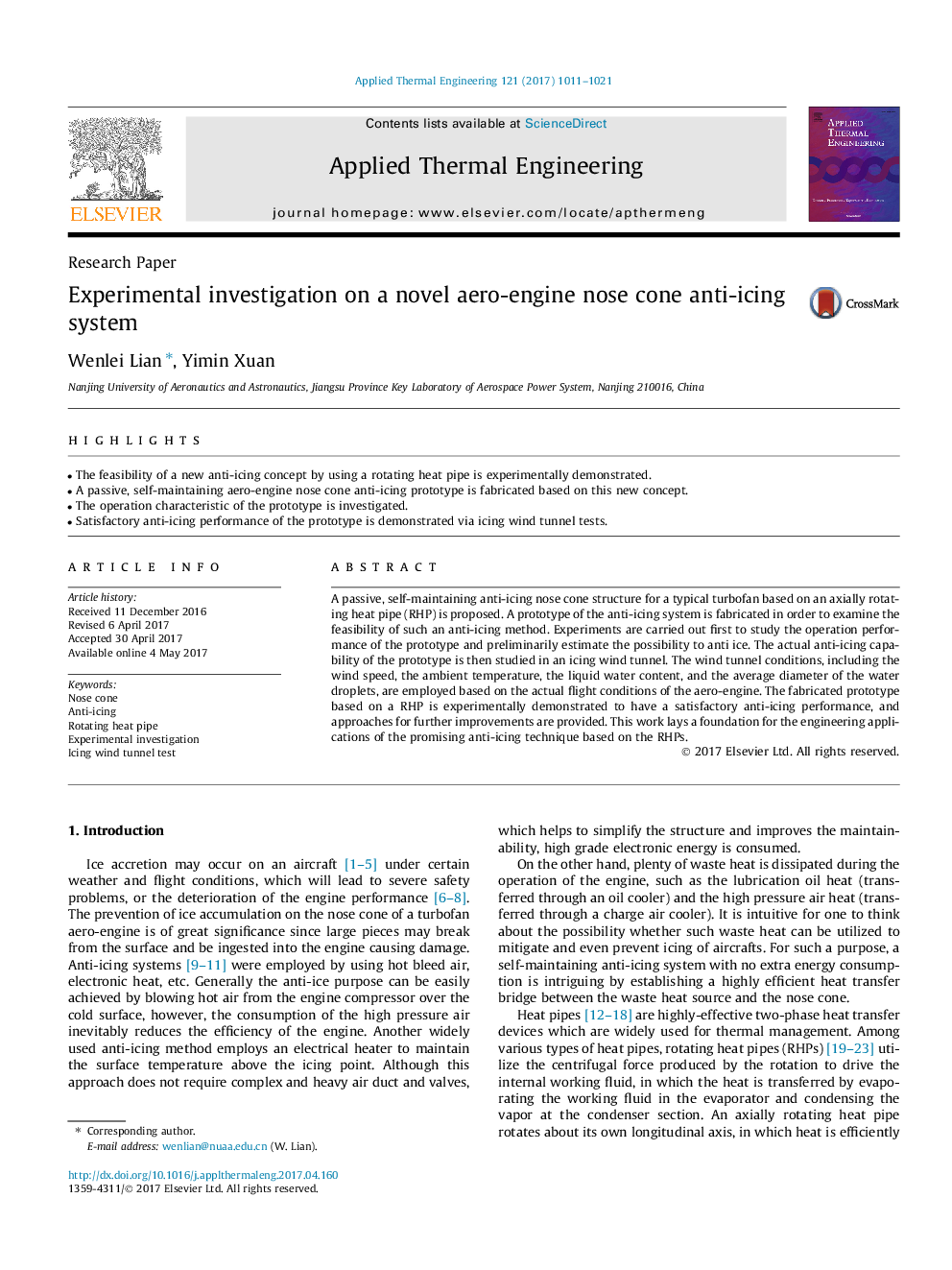| Article ID | Journal | Published Year | Pages | File Type |
|---|---|---|---|---|
| 4991149 | Applied Thermal Engineering | 2017 | 11 Pages |
Abstract
A passive, self-maintaining anti-icing nose cone structure for a typical turbofan based on an axially rotating heat pipe (RHP) is proposed. A prototype of the anti-icing system is fabricated in order to examine the feasibility of such an anti-icing method. Experiments are carried out first to study the operation performance of the prototype and preliminarily estimate the possibility to anti ice. The actual anti-icing capability of the prototype is then studied in an icing wind tunnel. The wind tunnel conditions, including the wind speed, the ambient temperature, the liquid water content, and the average diameter of the water droplets, are employed based on the actual flight conditions of the aero-engine. The fabricated prototype based on a RHP is experimentally demonstrated to have a satisfactory anti-icing performance, and approaches for further improvements are provided. This work lays a foundation for the engineering applications of the promising anti-icing technique based on the RHPs.
Related Topics
Physical Sciences and Engineering
Chemical Engineering
Fluid Flow and Transfer Processes
Authors
Wenlei Lian, Yimin Xuan,
